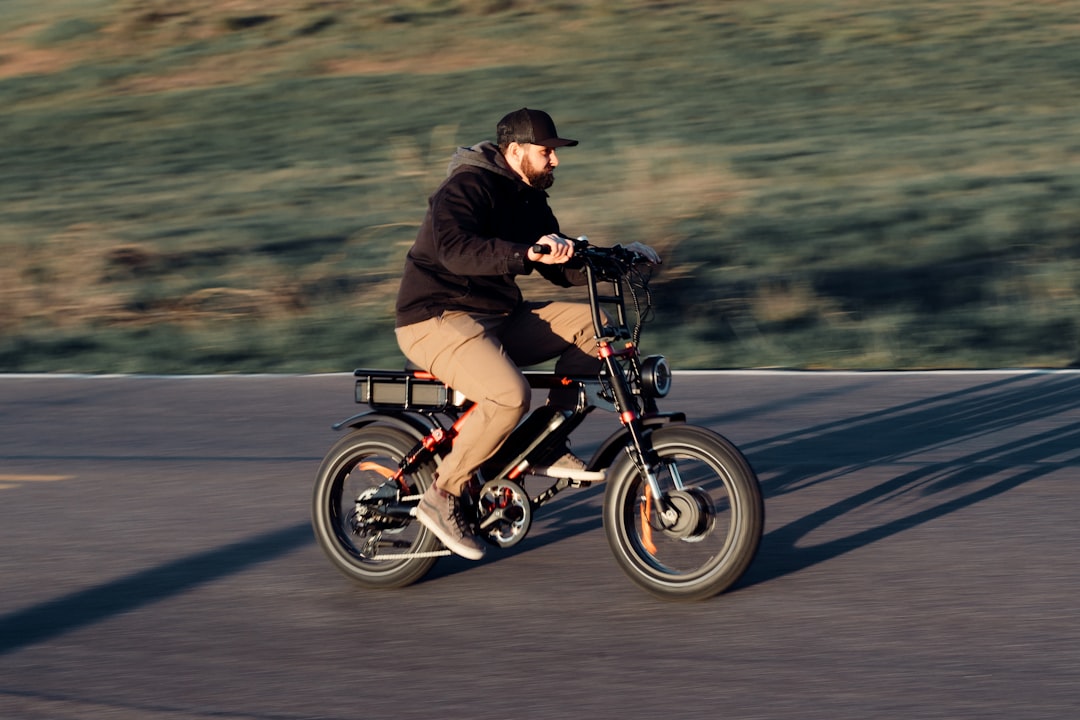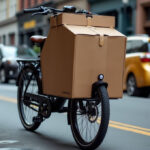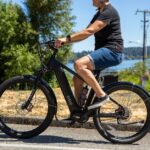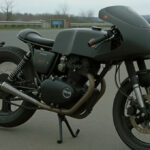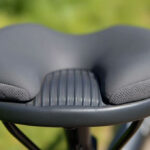Electrify Your Ride: The Benefits of Bicycle Electric Conversion Kits
Bicycle electric conversion kits are a game-changer for anyone looking to transform their regular bike into an eco-friendly, powerful e-bike. These kits make it easy and affordable to upgrade your ride without buying a whole new bike.
Quick Peek at Bicycle Electric Conversion Kits:
- Cost-Effective: Packages start as low as $339.99.
- Versatile Options: Choose from different power levels, 36V to 48V, and 500W to 3000W.
- Environmental Impact: Greatly reduce your carbon footprint.
Electric bikes aren’t just for leisure anymore—they’re becoming a practical solution for urban mobility. Using a conversion kit makes commuting faster and more efficient, plus it helps cut down on pollution. Imagine zipping through city streets with ease, knowing you’re contributing to a greener planet.
But it’s not just about practicality. The thrill of riding an e-bike is something you have to experience. The power, speed, and the sheer freedom are best. Kits often come with all the necessary parts, making them DIY-friendly so you can start enjoying these benefits right away.

Simple guide to bicycle electric conversion kits terms:
What Are Bicycle Electric Conversion Kits?
Bicycle electric conversion kits are designed to turn your regular bike into an electric-powered one. This upgrade can make your bike faster, easier to ride, and more fun. Plus, it’s a cost-effective and eco-friendly way to improve your biking experience.
Key Components of a Conversion Kit
A typical conversion kit includes:
- Hub Motor: This is the heart of the kit, providing the power to your bike.
- Battery: Powers the motor. You can choose from different voltages like 36V, 48V, etc.
- Controller: Manages the power flow from the battery to the motor.
- Display: Shows essential information like speed, battery level, and mode.
- Throttle: Allows you to control the speed manually.
- Pedal Assist Sensor (PAS): Detects your pedaling and provides power accordingly.
Types of Conversion Kits
There are several types of conversion kits available, each suitable for different kinds of bikes and riding preferences:
- Front Wheel Kits: Easy to install and great for regular bikes.
- Rear Wheel Kits: Offers better traction and balance, ideal for mountain bikes.
- Mid-Drive Kits: More complex to install but provides better weight distribution and efficiency.
- Friction Drive Kits: Attach to the rear wheel and are easy to install but less efficient.
Benefits of Using Conversion Kits
Cost-Effective: Instead of spending thousands on a new electric bike, conversion kits start at around $339.99.
DIY-Friendly: Most kits come with all necessary parts and instructions, making it easy to install yourself.
Eco-Friendly: Electric bikes reduce your carbon footprint by cutting down on car usage and emissions.
Versatile: With power options ranging from 500W to 3000W, you can choose a kit that fits your needs, whether for commuting or off-road trips.
Improved Riding Experience: Enjoy the thrill of riding faster with less effort. Kits like the Ktaxon Ebike Conversion Kit offer features like a Pedal Assist Sensor (PAS) for a seamless riding experience.
Real-World Applications
Many people have found these kits to be a game-changer. For example, older adults find electric bikes easier to ride, allowing them to stay active longer. Commuters love the speed and convenience, making their daily travel faster and less stressful.
Jason Kraft, CEO of Electric Bike Technologies, highlights the importance of these kits in making electric biking accessible to all. “Our goal is to make power and sustainability accessible with kits for all bikes and budgets,” he says.
So, whether you’re looking to simplify your commute, enjoy weekend rides, or reduce your environmental impact, bicycle electric conversion kits offer a practical and exciting solution.
Next, let’s dive into how to choose the right electric bicycle battery kit for your needs.
How to Choose the Right Electric Bicycle Battery Kit
Choosing the right electric bicycle battery kit can be a bit overwhelming, but breaking it down into key factors makes it easier. Here’s what you need to consider:
Compatibility
Before anything else, ensure the kit is compatible with your bike. Most kits are designed for standard bikes, but it’s crucial to check:
- Wheel Size: Kits typically specify wheel sizes they support (e.g., 26-inch, 28-inch).
- Frame Type: Ensure your bike frame can accommodate the motor and battery. Some kits, like the Ktaxon Ebike Conversion Kit, are designed to fit most standard bikes.
- Brake Type: Some kits come with specific brake requirements, so double-check if your bike’s brakes are compatible.
Power
The power of the motor, measured in watts (W), determines how much assistance you’ll get:
- 500W to 1000W: Suitable for flat terrains and daily commuting.
- 1000W to 1500W: Good for hilly areas and carrying extra weight.
- 2000W to 3000W: Ideal for off-road and heavy-duty use.
More power means better performance but also higher energy consumption and cost.
Voltage
Voltage (V) affects the overall performance and speed of your e-bike:
- 36V Kits: Generally offer a balanced performance and are good for casual riders.
- 48V Kits: Provide more power and speed, suitable for enthusiasts and those needing extra boost.
- 72V Kits: High-end kits for serious riders who need maximum power and speed.
Installation
Ease of installation can vary between kits. Look for:
- Comprehensive Instructions: Kits with clear, step-by-step guides and videos make DIY installation straightforward.
- All-Inclusive Packages: Ensure the kit includes all necessary components like the motor, battery, controller, display, and throttle. This reduces the hassle of sourcing additional parts.
- Support and Warranty: Good customer support and a solid warranty can be lifesavers if you encounter issues.
Cost
Budget is always a consideration. Kits can range from as low as $339.99 to over $1,000. Here’s a quick breakdown:
- Budget Kits: Around $339.99 to $500. These are great for casual riders and those new to e-bikes.
- Mid-Range Kits: $500 to $800. Offer better components and more power.
- High-End Kits: $800 and above. These provide top-tier performance and durability, suitable for serious riders.
Real-World Example
Jason Kraft, CEO of Electric Bike Technologies, emphasizes the affordability and accessibility of these kits: “Our goal is to make power and sustainability accessible with kits for all bikes and budgets,” he says. This reflects the diverse range of options available to fit different needs and financial constraints.
When choosing a kit, balance your needs with your budget. Whether you’re a commuter, a weekend warrior, or an off-road tripr, there’s a kit out there for you.
Next, let’s explore the top 5 features to look for in bicycle electric conversion kits.
Top 5 Features to Look for in Bicycle Electric Conversion Kits
When investing in a bicycle electric conversion kit, it’s essential to know what features will give you the best value for your money. Here are the top five features to consider:
1. Battery Life
Battery life is one of the most critical factors. The range you get from a single charge can vary widely based on the battery capacity, usually measured in watt-hours (Wh). A higher Wh rating typically means a longer range.
- Commuting Needs: If you’re using your e-bike for daily commutes, look for kits that offer at least 500Wh, which can provide around 20-40 miles per charge.
- Longer Rides: For extended rides or off-road trips, consider batteries with 750Wh or more.
The Ktaxon Ebike Conversion Kit offers a robust battery that ensures you can enjoy longer rides without constantly worrying about recharging.
2. Motor Efficiency
Motor efficiency determines how effectively the motor converts electrical energy into mechanical energy, impacting both performance and battery life.
- Efficiency Rating: Look for motors with an efficiency rating above 80%. For instance, the Ktaxon kit boasts a motor efficiency of 83.50%, ensuring a smooth and powerful ride.
- Type of Motor: Brushless motors are generally more efficient and require less maintenance compared to brushed motors.
3. Ease of Installation
Not everyone is a tech wizard, so ease of installation can make or break your experience with a conversion kit.
- User-Friendly Instructions: Kits that come with detailed guides and video tutorials are a huge plus. The Ktaxon kit, for example, includes comprehensive instructions to help you through the process.
- All-Inclusive Packages: Ensure the kit includes all necessary components like the motor, battery, controller, and display. This saves you from the hassle of sourcing additional parts.
4. Customer Reviews
Customer reviews can provide real-world insights into the performance and reliability of a conversion kit. Look for consistent positive feedback on:
- Battery Life: Are users satisfied with the range?
- Installation Process: Is it as straightforward as advertised?
- Durability: Does the kit stand up to regular use and different weather conditions?
A kit like the Ktaxon Ebike Conversion Kit, which has garnered a mix of reviews, helps you weigh the pros and cons based on real user experiences.
5. Warranty
A solid warranty is a sign that the manufacturer stands behind their product. It can also save you money and headaches down the line.
- Coverage: Look for at least a one-year warranty on both the motor and battery.
- Customer Support: Good customer service can be invaluable if you run into issues. Companies that offer responsive support and clear warranty terms are often more reliable.
Jason Kraft, CEO of Electric Bike Technologies, highlights the importance of a good warranty: “Our customer service professionals will help you with your order should you need it, they are the best in the business.”

By focusing on these key features, you can ensure that you choose a bicycle electric conversion kit that meets your needs and provides a reliable, enjoyable riding experience.
Next, let’s dive into the installation process for bicycle electric conversion kits.
Installation Guide for Bicycle Electric Conversion Kits
Installing a bicycle electric conversion kit can seem daunting, but with the right tools and steps, it becomes a manageable DIY project. Follow this guide to transform your regular bike into an electric powerhouse.
Step-by-Step Installation
-
Preparation
- Read the Manual: Start by reading the instructions provided with your kit.
- Gather Tools: Common tools you’ll need include wrenches, screwdrivers, and pliers.
- Check Compatibility: Ensure your bike frame and components are compatible with the kit.
-
Remove Existing Components
- Front/Rear Wheel: Depending on your kit, remove the front or rear wheel.
- Brake Handles: If your kit includes new brake handles, remove the old ones.
-
Install the Motor Wheel
- Fit the Motorized Wheel: Align and secure the motorized wheel in place of the old wheel.
- Tighten Axle Nuts: Ensure the axle nuts are tightly secured.
-
Attach the Battery and Controller
- Mount the Battery: Secure the battery to the frame using the provided brackets.
- Connect the Controller: Attach the controller to the frame and connect it to the battery and motor.
-
Install the Display and Throttle
- Handlebar Mount: Attach the LCD display and throttle to the handlebars.
- Connect Wires: Follow the wiring guide to connect the display and throttle to the controller.
-
Pedal Assist Sensor (PAS)
- Install PAS: Attach the PAS to the crankset as per the instructions.
- Connect PAS Wires: Ensure the PAS wires are connected to the controller.
-
Final Adjustments
- Check Connections: Double-check all electrical connections.
- Test Ride: Before hitting the road, test the bike in a safe area to ensure everything works correctly.
Tools Needed
- Wrenches and Allen Keys: For removing and installing wheels and components.
- Screwdrivers: For securing various parts.
- Pliers: Handy for gripping and cutting wires.
- Zip Ties: To manage and secure cables neatly.
Safety Tips
- Wear Protective Gear: Always wear gloves and eye protection while working.
- Disconnect Battery: Ensure the battery is disconnected during installation to avoid electrical hazards.
- Secure Cables: Use zip ties to secure loose cables and prevent them from interfering with moving parts.
Common Issues
- Loose Connections: Double-check all connections if the motor or display doesn’t work.
- Battery Not Charging: Ensure the battery is properly connected and the charger is functioning.
- Motor Noise: If the motor makes unusual noises, check for loose parts or misalignment.
By following these steps and tips, you can enjoy a smooth and safe installation process. Next, we’ll explore the performance and speed capabilities of different electric bicycle conversion kits.
Performance and Speed of Electric Bicycle Conversion Kits
When it comes to bicycle electric conversion kits, performance and speed are key factors to consider. Let’s explore what you can expect from different kits, especially the popular 1000W and 1500W options, as well as how speed limits and terrain impact your ride.
1000W Kits
1000W conversion kits are a sweet spot for many riders. They offer a balance between power and efficiency. These kits can achieve speeds of up to 28 mph (45 km/h) on flat terrain.
- Torque and Acceleration: With a motor torque of around 27NM, as seen in the Ktaxon 48V 1000W Ebike Conversion Kit, you’ll experience strong acceleration, making it easier to tackle hills and rough terrains.
- Battery Efficiency: These kits often come with efficient batteries that provide good range without adding too much weight.
1500W Kits
For those seeking even more power, 1500W kits push the limits. These kits can propel your bike to speeds of up to 35 mph (56 km/h).
- Higher Torque: Expect torque values to be higher, providing quicker acceleration and better performance on steep inclines.
- Increased Power Consumption: The trade-off for this extra power is increased battery consumption. Ensure your battery capacity matches the motor to avoid frequent recharges.
Speed Limits
While it’s tempting to push your e-bike to its limits, speed regulations vary by region.
- US and UK Limits: In the US, the speed limit for e-bikes is typically 20 mph (32 km/h), while in the UK, it’s 15 mph (24 km/h). Exceeding these limits may require registration and insurance.
Terrain Impact
The terrain you ride on significantly affects your e-bike’s performance and speed.
- Flat Terrain: Ideal for achieving maximum speeds. Both 1000W and 1500W kits perform well here.
- Hilly Terrain: Higher wattage kits (like the 1500W) handle hills better due to increased torque. However, expect reduced battery life.
- Off-Road: For trails and rough paths, ensure your kit includes robust components like a strong motor hub and durable tires.
By understanding the capabilities and limitations of different bicycle electric conversion kits, you can choose the right one to match your riding style and terrain. Next, let’s discuss how to maintain these kits to keep your ride smooth and efficient.
Maintenance Tips for Electric Bicycle Battery Kits
Keeping your bicycle electric conversion kit in top shape is crucial for a smooth and long-lasting ride. Let’s explore essential maintenance tips, focusing on battery care, motor maintenance, winter tips, and troubleshooting.
Battery Care
Your e-bike battery is the heart of your conversion kit. Proper care can extend its life and maintain performance.
- Charging: Always use the charger provided with your kit. Avoid overcharging by unplugging once fully charged.
- Storage: Store the battery in a cool, dry place. Avoid extreme temperatures as they can degrade battery life.
- Usage: Regularly use and charge your battery. If storing for long periods, keep it partially charged (around 50%).
Motor Maintenance
The motor is another critical component. Here’s how to keep it running smoothly:
- Cleaning: Regularly clean the motor area to prevent dirt and debris buildup. Use a dry cloth; avoid water to prevent electrical damage.
- Inspection: Periodically check for loose connections and wear. Tighten any loose bolts and ensure wires are intact.
- Lubrication: Some motors may require lubrication. Refer to your kit’s manual for specific instructions.
Winter Tips
Riding in winter requires extra precautions to protect your e-bike components.
- Battery Protection: Cold temperatures can reduce battery efficiency. Keep the battery warm by storing it indoors when not in use.
- Motor Care: Ensure the motor is free from snow and ice. After rides, clean off any salt or grime to prevent corrosion.
- Tire Pressure: Lower tire pressure slightly for better traction on icy roads.
Troubleshooting
Even with regular maintenance, issues can arise. Here are some common problems and solutions:
- Battery Not Charging: Check the charger and connections. If the problem persists, the battery may need replacement.
- Motor Not Running: Inspect the wiring and connections. Ensure the throttle and pedal assist systems are functioning correctly.
- Reduced Range: This could indicate battery aging or improper charging habits. Try recalibrating the battery or consult a professional.
By following these maintenance tips, you can ensure your bicycle electric conversion kit remains reliable and efficient. Next, let’s address frequently asked questions about these kits to help you make informed decisions.
Frequently Asked Questions about Bicycle Electric Conversion Kits
How much does it cost to convert a bike to electric?
The cost of converting a bike to electric can vary widely based on the type of kit and its features. Kits typically range from $339.99 to over $1,000. Factors affecting cost include motor power, battery capacity, and additional features like LCD displays or pedal assist sensors. Investing in a quality kit can save money in the long run through durability and performance.
Is it worth it to convert a bike to an e-bike?
Absolutely! Converting a bike to an e-bike can be a cost-effective way to enjoy the benefits of electric biking without buying a new e-bike.
Benefits include:
- Cost Savings: Conversion kits are generally cheaper than new e-bikes.
- Customization: You can choose components that fit your specific needs and preferences.
- Eco-Friendly: Reduces carbon footprint by reusing an existing bike.
A notable story is from a customer who said, “When Allison came back from her first ride on her own, she said to me, ‘I’ve never really seen our own neighborhood before.’ And I’m thinking, ‘Oh my God, you’re free.'” This highlights the newfound freedom and joy that an e-bike conversion can bring.
How fast can an electric bike conversion kit go?
Speed depends on the motor power and local regulations. Most conversion kits offer speeds up to 15mph in the UK and 20mph in the US. Higher-powered kits (e.g., 1000W or 1500W) can potentially reach higher speeds, but stay within legal limits to avoid the need for tax and insurance.
Factors affecting speed:
- Motor Power: Higher wattage motors provide more speed.
- Battery Voltage: Higher voltage batteries can sustain higher speeds.
- Terrain: Flat surfaces allow for maximum speed, while hills may reduce it.
For instance, a 48V 1000W kit can provide efficient and noiseless running, making it a popular choice for those seeking both performance and compliance with local laws.
By understanding these aspects, you can make an informed decision about converting your bike to electric and enjoy the many benefits it offers. Next, let’s explore the installation process to get your new e-bike up and running.
Conclusion
At Doot Scoot, we’re committed to helping you steer the exciting world of bicycle electric conversion kits. Our goal is to be your go-to source for all things eBike, whether you’re a seasoned rider or just starting out.
Market Positioning
We strive to establish ourselves as the leading authority in eBike reviews and guides. Our expertise is built on years of experience and a deep understanding of the industry. By offering comprehensive reviews and expert comparisons, we aim to help you make informed decisions.
Eco-Friendly Benefits
Electric bikes are a great step towards sustainable urban mobility. By converting your existing bike, you’re not only saving money but also reducing your carbon footprint. This eco-friendly choice helps reduce the number of new bikes produced, which in turn conserves natural resources.
Customer Support
We believe in providing excellent customer support. Our team is always ready to assist you with any questions or issues you might face. Whether you need help choosing the right kit or troubleshooting a problem, we’re here for you.
Future Trends
Looking ahead, the future of eBikes is bright. We’re staying ahead of trends by keeping up with the latest developments in eBike technology and policies. We plan to expand our offerings and possibly venture into related markets like e-scooters. By partnering with urban mobility organizations and sustainability influencers, we aim to broaden our reach and impact.
Thank you for choosing Doot Scoot as your trusted source for eBike information. Together, we can make urban transportation more sustainable, efficient, and enjoyable.
For more information, check out our range of hub and mid-drive conversion kits.
By understanding the benefits and features of electric bicycle conversion kits, you can make a well-informed decision and enjoy a more sustainable and efficient ride. Happy biking!
